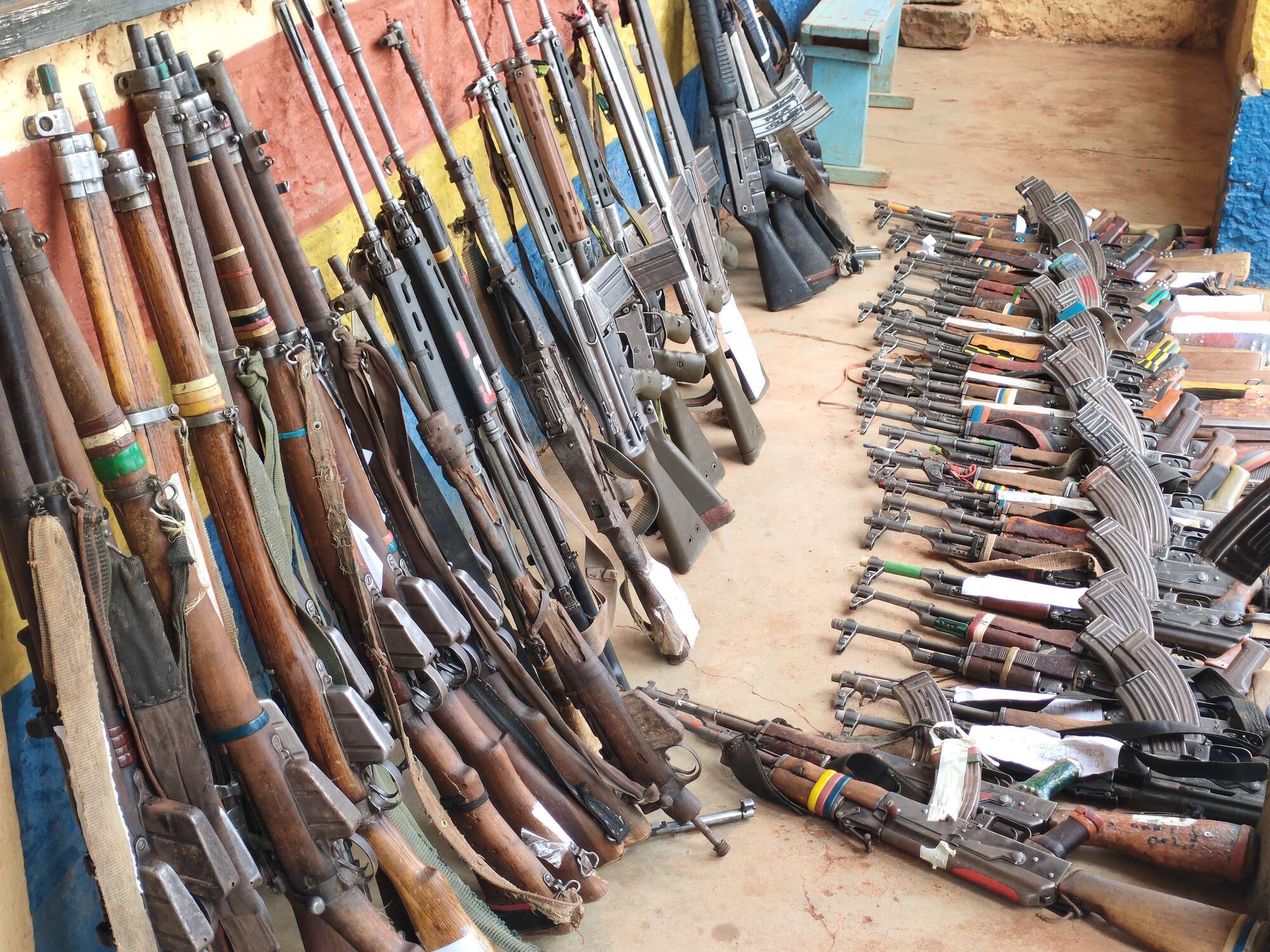The discussions arose this week as delegates from 26 African countries gathered in Nairobi to review a common position on arms control, ahead of a global conference in the US later this year.
The spoke of the threat of small arms traded illegally on the continent, and how they are fuelling conflicts and making it difficult to establish long-term peace. They also spoke of the problem of tracing, as the continent becomes one huge market for small arms.
Kenya’s Interior Principal Secretary Raymond Omollo said termed the proliferation and misuse of small and light weapons an existential threat to Africa’s peace, cohesion and stability.
“Small and light weapons continue to wreak havoc in communities, fuel conflict, undermine peace and stability, and hinder socioeconomic development in the African continent,” Dr Omollo said.
In Kenya, banditry has become harder to deal with as locals access small arms with ease, mostly smuggled across the borders.
Closely monitored borders can only solve half the problem, since producers of those arms, most of them outside of the continent, continue to churn iut their deadly merchandise, experts said.
The conference included senior officials from the United Nations, African Union and regional blocs.
The AU says it is discussing a common policy with member states to ensure that the continent has a unified approach in curbing the proliferation of small arms and light weapons. It will need money, and new tech for tracing from source to end-user as well as actual expiries or recycling.
Christopher Kayoshe, AU acting head Disarmament, Demobilisation and Reintegration/Security Sector Reform Division, said this will help achieve the “silencing the guns” goal initially intended for 2022 but deferred to 2030.
“It is our desire that the continent is guided by a common position so that these deliberated meetings involved in the AU Commission are valuable,” he said in Nairobi.
The AU passed the Bamako Declaration on an African Common Position on the Illicit Proliferation, Circulation and Trafficking of Small Arms and Light Weapons to aid coordinated participation of Africa when negotiating with outside entities such as the UN for global actions on illicit arms. But that also assumes that governments on the continent work in tandem and are always stable.
The immediate, more easily acceptable means, however, is controlling arms imports and exports.
For Africa, some countries in the region such as South Sudan have an arms embargo imposed on them. But illicit arms still flow, causing endless clashes between militia and security forces. Somalia and the Democratic Republic of Congo had arms embargoes imposed until last year. But the conflict in eastern DRC was still running, blamed omn to illegal trade in arms.
The upcoming conference in June in New York, known as 4th Review conference (RevCon4) is supposed to help address the evasive issue of arms tracing. Maritza Chan, president-designate for the conference, said they expect a plan of action on International Tracing Instruments (ITI) of illicit small arms and weapons. She argued the supply side of arms must also take responsibility.
Izumi Nakamitsu, the United Nation’s Under-Secretary-General and High Representative for Disarmament Affairs, argued countries must learn their lessons.
She argued that easy availability of small arms was hurting Eastern and Southern Africa’s regionl efforts for sustainable peace, security and socio-economic development.
“In this geopolitical landscape fraught with multi-layered risks, illicit proliferation, diversion and misuse of small arms and light weapons is a major contributing factor that perpetuate much of the human suffering we see in the world,” she said.
Terrorism, poaching and armed insurgencies are fuelled in the continent owing to the ease with which illicit small arms and light weapons cross their borders, she argued.
In Africa, the United Nations Institute for Disarmament Research (Unidir) estimates that out of the 40 million small arms in the continent, 40 percent of its gun ownership is illicit.
On the global scale, it is estimated that one billion small arms are in circulation and kill some 250,000 people each year.
These deadly weapons account for 45 per cent of all violent deaths globally with the data from Unidir indicating that 260,000 people were killed by small arms in 2021 alone.
Currently, Eastern African states, that is, Sudan, South Sudan, Djibouti, Eritrea, Ethiopia, Somalia, Kenya, Tanzania and Uganda drive the continental average for human smuggling, extorting and protection racketeering, arms and human trafficking, the Africa Organised Crime Index 2023, established.
The report revealed that the two most pervasive criminal markets in the region are human trafficking and arms trafficking.














